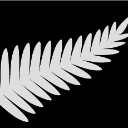Turn on suggestions
Auto-suggest helps you quickly narrow down your search results by suggesting possible matches as you type.
Showing results for
- Home
- /
- Programming
- /
- SAS Procedures
- /
- Proc Sql and year function
Options
- RSS Feed
- Mark Topic as New
- Mark Topic as Read
- Float this Topic for Current User
- Bookmark
- Subscribe
- Mute
- Printer Friendly Page
- Mark as New
- Bookmark
- Subscribe
- Mute
- RSS Feed
- Permalink
- Report Inappropriate Content
Posted 08-18-2009 09:33 PM
(1791 views)
I am an sql user trying to learn SAS and would appreciate it if anyone would help me with this query.
The following code I expected only to bring back the unique dates and there counts.... but running this in SAS returned a record for every observation with the year and count.
proc sql;
select year(change_date),count(*)
from customer_table
group by year(change_date);
quit;
Example result:
Year Count
2009 10000
2009 10000
2009 10000
2009 10000
...
...
What would be the correct way to write this query?
Cheers.
The following code I expected only to bring back the unique dates and there counts.... but running this in SAS returned a record for every observation with the year and count.
proc sql;
select year(change_date),count(*)
from customer_table
group by year(change_date);
quit;
Example result:
Year Count
2009 10000
2009 10000
2009 10000
2009 10000
...
...
What would be the correct way to write this query?
Cheers.
2 REPLIES 2
- Mark as New
- Bookmark
- Subscribe
- Mute
- RSS Feed
- Permalink
- Report Inappropriate Content
You are grouping by a fct of change_date, but change_date in not in your putput.
select year(change_date) as year, count(*)
from customer_table
group by year;
will work.
select year(change_date) as year, count(*)
from customer_table
group by year;
will work.
- Mark as New
- Bookmark
- Subscribe
- Mute
- RSS Feed
- Permalink
- Report Inappropriate Content
You mention "only want to bring back the date", yet you have the YEAR function coded? Interesting.
You will also want to review PROC SQL procedure discussion in the SAS documentation, available at the SAS support http://support.sas.com/ website, along with other topic-related technical papers and conference presentations on relevant topics.
Scott Barry
SBBWorks, Inc.
http://support.sas.com/documentation/cdl/en/proc/61895/HTML/default/a002473669.htm
You will also want to review PROC SQL procedure discussion in the SAS documentation, available at the SAS support http://support.sas.com/ website, along with other topic-related technical papers and conference presentations on relevant topics.
Scott Barry
SBBWorks, Inc.
http://support.sas.com/documentation/cdl/en/proc/61895/HTML/default/a002473669.htm
April 27 – 30 | Gaylord Texan | Grapevine, Texas
Registration is open
Walk in ready to learn. Walk out ready to deliver. This is the data and AI conference you can't afford to miss.
Register now and lock in 2025 pricing—just $495!
What is Bayesian Analysis?
Learn the difference between classical and Bayesian statistical approaches and see a few PROC examples to perform Bayesian analysis in this video.
Find more tutorials on the SAS Users YouTube channel.
SAS Training: Just a Click Away
Ready to level-up your skills? Choose your own adventure.


